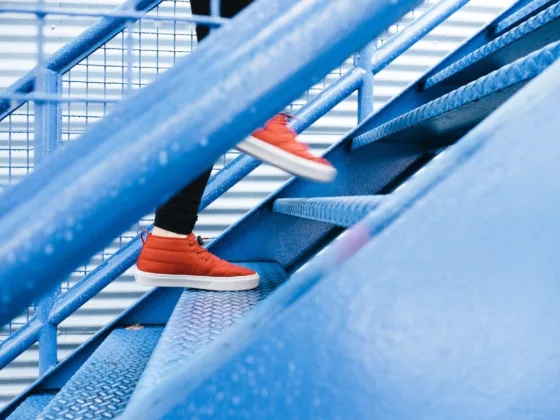Table of Contents Show
Water damage or flooding in your house is one of the most terrible things you may ever endure.
No matter how big or how little the flood is, it may be quite stressful for cleaning as it takes time, patience, and effort to accomplish these things.
Every kind of issue imaginable may result in concerns such as broken pipes, leaking appliances, or more serious problems such as sewage backups and flooded basements.
Worse, you may have limited time to devote to restoration, which may result in considerably more repercussions.
Water damage may cause a variety of safety risks and structural issues you may not discover until it’s too late.

Essentials In the Aftermath
Note that after a flood or water damage, there are some measures to do immediately. Here’s your step checklist on how you can deal with this:
1. Call for Water Damage and Flood Restoration
It’s essential to take immediate action to handle the situation. You need to call water damage experts like SERVPRO of Lee & South Chatham Counties and others who have the capability and equipment to restore your property to pre-damage condition. They can manage the water removal and water cleaning processes.
2. Document the Damage for Insurance Claims
Your home insurance premiums will vary according to the plans you hold. A policy can only be effective if it states you have a 48-hour window following the occurrence of water damage to begin repairs.
Severe storms are often covered by flood insurance, which is a distinct policy. While it’s critical to understand the distinction, you may sort out the specifics later. The essential thing is to file the claim as soon as possible.
The insurance provider will send an adjuster to inspect and evaluate the damages to decide if it’s a covered loss.
Take as many photographs as possible before, during, and after cleaning to document and the value of everything you can think of. This will assist the adjuster in assessing the damage.
Read Also:
3. Stay Calm and Be Safe
Keep yourself calm so you can think clearly if your house is flooded. The first thing you have to do is to shut down all power sources and natural gas you have.
You don’t want to walk in potentially dangerous live water. If needed, get an electrician to examine the premises.
Floods may occur in various ways, and homeowners may experience anything from a few inches of water in their basement to flash flooding when water levels approach the roof.
When worst comes to worst, bear in mind that water may be unexpected during a flood, rapidly rising, sweeping away bridges, and posing dangers from power lines or gas tanks. Vacate your property and return home only when it’s safe to do so.
Even if there’s no electricity in your house, you can’t trust the electrical current won’t travel into floods.
A brownout scenario may indicate there’s still some low-level or fluctuating power flowing through the wires.
Even in a total power loss event, a homeowner who improperly connects a generator to the grid may unintentionally feed energy back into the lines.
The only way to ensure no electric current enters your home is for a professional electrician or your electric provider to remove the electric meter box.
4. Water Damage Cleanup
After you’ve done everything to minimize the water damage, you’ll move on now to cleaning. This stage involves the removal of damaged items and construction materials as well as the assessment of the entire procedure.
As you file your claim with your insurance company, it’s critical to record damage before attempting to clean up. This is something your water damage repair professional can assist you with.
Here are the following steps in water damage cleanup:
Dry Out Your Home
When it comes to standing water, quick action is essential for limiting property damage and mold development.
Mold may begin developing on a wet surface in as little as 24 to 48 hours, so it’s critical to remove any standing water and start drying your home.
Once you’ve removed any standing water from your house, you’ll still need to take care of wet items, primarily if you reside in a highly humid region.
If you’re able to restore power, utilize central air conditioning to eliminate excess humidity.
Exercise caution when it comes to electrical dangers. Sump pumps may be equipped with a backup battery that can continue pumping water even when the power is off.
Additionally, it’s intended to operate securely in rainy situations. Using appliances or a generator in wet conditions may add to the risk.
Dehumidify
Dehumidifiers work like vacuum cleaners by removing moisture from the air. Both absorption and adsorption take place while using these.
Not only can dehumidifiers remove excess water from your house but they also prevent mold development.
Pinpointing the source of a water leak or flooding would require moist air drawn from the room where there’s a leak or flooding.
The spinning wheel in the duct is water absorbent, and this will suck up the humidity in the air.
Space is then re-aerated with dryer air. After repeated application, the moisture inside will be dried up quickly.
5. Stabilize the Structure
Most of the furnishings and other items in your home are likely to be ruined by long-term flooding. Still, the house may be salvageable if cleaning starts immediately.
Residual moisture in the structure should have waited out before repairs can be carried out, which may take weeks. Your contractor can repair the following structural issues such as:
- Leaky windows and doors
- Damaged roof
- Wood rotted from water damage
- Rusted fastener and metal studs
- Weakened building’s foundation
6. Clean All Possible Places of Water Seepage
Water seepage occurs when water runs through tiny pores or porous material from one location to another. It’s a common occurrence often happening after significant rains.
The level of groundwater rises, and the extra water in the soil exerts hydrostatic pressure on the foundation of your house.
This pushes water into your home through the minor gaps in the floor and walls of your basement.
Clean up all the possible places of water seepage in your house. For example, if your basement is flooded, you need to check the water levels in the crawl space or the foundation.
In your attic, you should check the rafters and the underneath of the drywall. You should also check your basement’s main sewer pipe and see whether there are leaks in it.
Other pipes like the ones in your hot water tank should also be checked. If you find any signs of leakage in these pipes, you should immediately replace them so no further damage will be done.
7. Prevent Mold
Mold develops in damp places and reproduces via tiny seeds called spores. Mold may affect you even if you have no underlying health problems.
Children, the elderly, and those with respiratory issues are in much greater danger while sharing a house with others.
If you want to be protected against mold, you must know the possible areas where mold occurs after water damage.
While there are no shortcuts that can be taken in short term, there are some things you can do to protect your home against the effects of mold.
The worse infestations tend to occur in basements, attics, and damp crawlspaces where water has leaked into from the outside or trickled in from the inside.
Preventing leaks, controlling humidity in attics, and routing excess water away from your foundation are your best defenses.
If you have any concerns about the condition of your home, a licensed mold inspector should be consulted as they’ll know the signs of mold and what to look for. In the end, prevention is always better than cure.
8. Replace Water-Damaged Equipment
Water damage may cause damage to your house, including damage to mechanical pieces, plumbing pipes, and electrical wiring.
Here are some of the possible replacements due to extensive water damage:
- Corrosion may require the replacement of electrical wiring, conduit, and outlets.
- HVAC (heating, ventilation, and air conditioning) and other mechanical systems may need replacement.
- Submersion of electric motors or electrical equipment in water may result in irreversible damage.
- Light fixtures may need to be replaced.
When hiring a plumber or an electrical maintenance specialist to perform work on electrical and water damage problems, choose the best one who’s reliable and trustworthy.
Hiring these professionals will often cost you more money than purchasing the necessary electrical components to perform the work, so it’s essential to ensure you get a good contractor.
Conclusion
Even if you have this checklist on dealing with flood and water damage, most flooding and water damage situations need an immediate professional response. Once the leak has stopped, it’s time to begin draining water and start the structural repairs.
If you attempt to do it yourself and miss anything or wait too long to call for professional help, the repair and restoration of your property will take much longer.
Often, restoration experts respond more promptly to damage, taking measures that a typical homeowner may overlook, resulting in lower total repair expenses.










